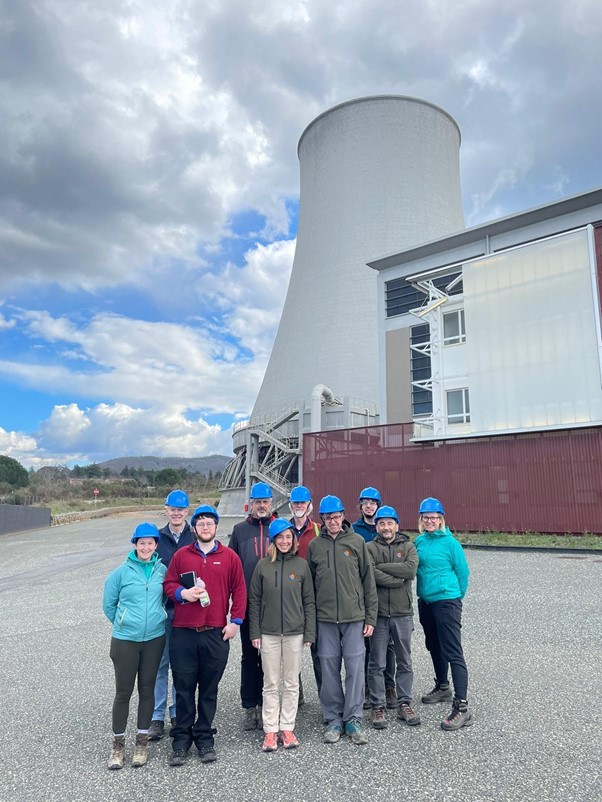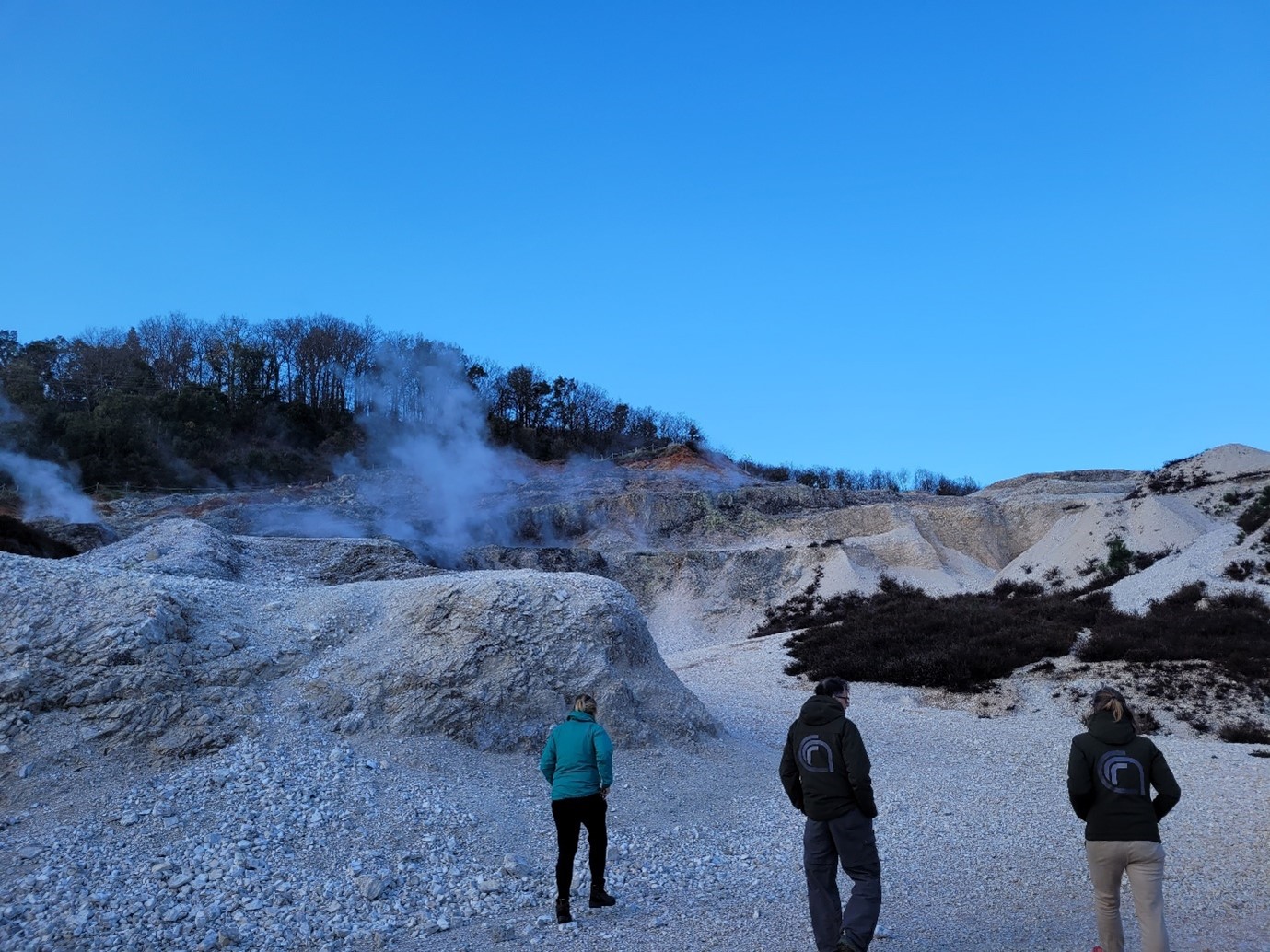The heat beneath our feet: BGS field visit to Tuscan geothermal systems
BGS visits the active and fossilised geothermal systems of southern Tuscany, Italy.
05/07/2024 By BGS Press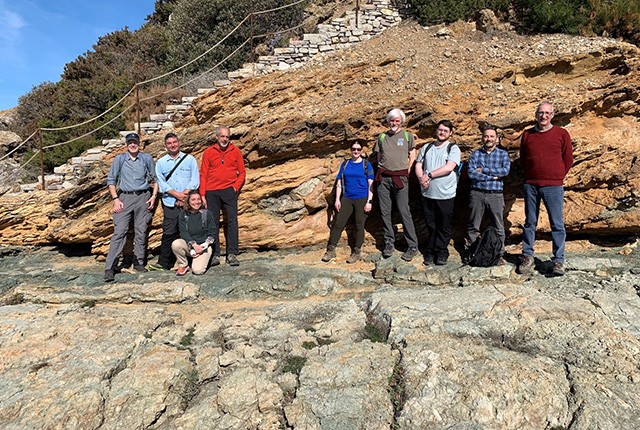
Geothermal systems consist of fluids heated by underlying bedrock, providing not only renewable geothermal energy resources, but potentially also some of the critical metals, such as lithium, that are vital for the decarbonisation of the economy.
The Royal Society-funded Lithium Energy Geothermal (LEG) project, which ended in June 2024, investigated the resource potential of lithium in geothermal fluids, to increase the economic viability of renewable energy from geothermal power generation. The focal point of the project was knowledge exchange between BGS and the National Research Council of Italy Institute of Geosciences and Earth Resources (CNR-IGG). This was facilitated by hydrothermal fluid/rock interaction experiments at laboratory scale and field visits to geothermal sites in both the UK and Italy, which aimed to foster new collaborations for future research programmes.
With BGS-led visits already held in south-west England focusing on lithium geothermal prospects, the project turned to both the active and fossilised geothermal systems of southern Tuscany for its final phase. The BGS team were met by representatives from CNR-IGG and Enel Green Power, alongside academics from the University of Bari Aldo Moro.
Both Cornwall and Tuscany, including the island of Elba, share some similar geological features. These include intrusive rocks enriched in lithium, hot groundwaters that can leach lithium, and structural controls that enable the movement of these waters. Sharing our knowledge helps us look for common controls on the subsurface processes, including controls that have universal importance.
Christopher Rochelle, BGS Geochemist.
The active geothermal system in Tuscany
An active geothermal system in southern Tuscany, known as the Larderello-Travale geothermal field (LTGF), is used by the energy production company Enel Green Power for power generation. Deep wells extract steam directly from the geothermal system and direct it through pipelines to turbines in the nearby geothermal power plants to generate electricity. The steam is then condensed, separating water from non-condensable gases including hydrogen sulfide (H2S) and small amounts of mercury, which is naturally present in the geothermal fluid.
The non-condensable gases are processed, capturing and removing mercury using sorbent beds and converting H2S to sulfur dioxide (SO2). The SO2 is absorbed into the water-cooling circuit at the plant. This process is known as the mercury and hydrogen sulfide emissions abatement system (AMIS).
The condensed water is then sent through re-injection wells into the reservoir, where high temperatures (up to 300°C) turn it back into steam.
There are two geothermal reservoirs:
- shallow, at depths between 500 and 1500 m
- deep, between 2 and 4 km
The shallow reservoir tapped by Enel Green Power is hosted within brecciated Triassic carbonates and evaporites; the deeper reservoir is hosted within fractured metamorphic schists and, locally, granites.
Geothermal site visits
On the first day of our Tuscan adventure, the BGS team was greeted by geologists from CNR-IGG at Castiglioncello magnesite mine. This an impressive example of serpentinite carbonation, which provides evidence of the role that crustal scale fractures play in mixing mantle-derived and meteoric (surface) fluids in geothermal systems. Later, we were taken to several geothermal sites, including:
- the Enel Green Power Geothermal Energy Headquarters
- the Nuova Sasso geothermal power plant, which is one of thirty power plants operated by Enel Green Power in the region
- the active geothermal sites at Le Biancane
At Nuova Sasso, we were shown the main components of the geothermal power plant, which produces approximately 20 megawatts (MW) of power. Following a long drive, the team then caught a ferry to the island of Elba, where we spent the next couple of days in the field learning about the exhumed fossilised geothermal system that is analogous to the LTGF.


Demonstration release of the steam from one of ENEL Green Power’s geothermal wells bored 740 m below the surface in 1956. The steam released is approximately 220°C, pressurised to 2 bars within the well. BGS © UKRI.
The fossilised geothermal system
The BGS team was joined by Andrea Brogi and Domenico Liotta from the University of Bari Aldo Moro, who were halfway through their geological mapping of Elba. The geothermal fluids of Elba circulated through deformed Triassic sediments of the Verrucano Formation as well as a deeper reservoir, which is hosted by fractured metamorphic schists and the upper levels of the emplaced Porto Azzurro monzogranite intrusion.
The geothermal system on the island was ‘fossilised’ following the eastward migration of magmatism since the late Miocene (Liotta et al, 2021), reducing the temperature of the underlying fractured and faulted rocks. That magmatism now underlies the LTGF in Tuscany.
The fracture network that was the conduit for the hot fluids has been sealed by fracture and fault infill. Subsequent regional uplift and erosion has exposed the fossilised system, allowing geologists, including our team, to observe and investigate the ancient geothermal plumbing in detail.
The team visited a variety of sites to observe the fossilised geothermal system, including an exposure of the Zuccale Fault that is partly responsible for fracturing and faulting the Triassic sediments hosting the shallow geothermal reservoir on the Italian mainland. Additional sites included the Topinetti iron deposit, the Rio de Torre skarn deposit and tourmalinite occurrences at Barbarossa Beach.
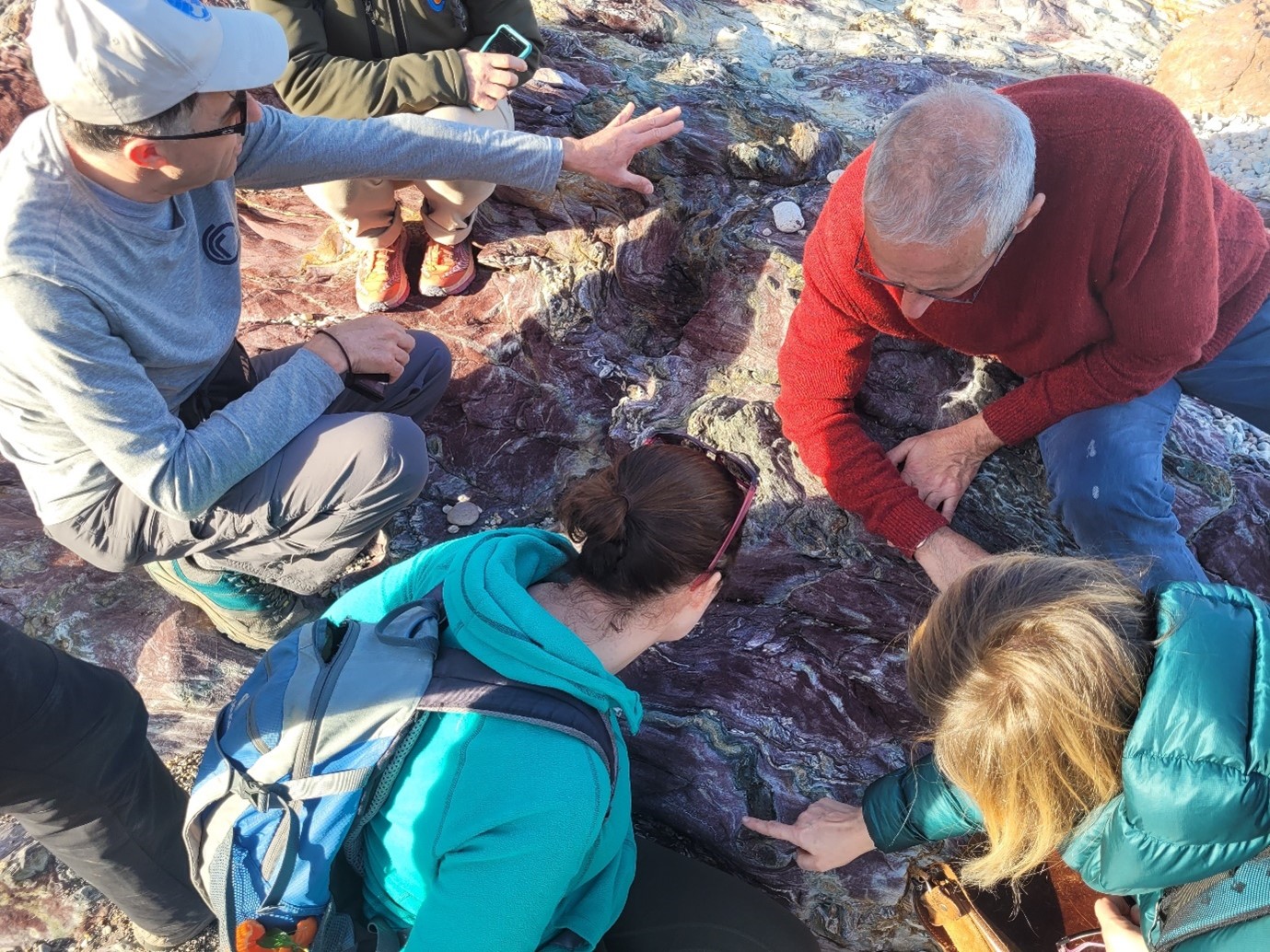
BGS and CNR-IGG geologists inspecting mineralisation within the altered and deformed Triassic metasediments at the Topinetti iron deposit.
The Topinetti iron deposit consists of haematite, magnetite and sulfide mineralised veins hosted within the hanging wall of the altered and deformed metasediments of the Verrucano Formation. It has been exploited for iron since the Etruscan inhabitation of Elba in the ninth to eighth centuries BCE, right up to the 1970s. The deposit is estimated to have produced 60 million tonnes of iron ore. Nearby beaches contain clasts of slag, suggesting the presence of historic processing of iron ore in the area.
Putting a LEG forward: next steps
The LEG project provided a fantastic opportunity for UK and Italian scientists to exchange knowledge on their geothermal systems both in the field and in the laboratory. Through numerous conversations and data interpretation, we are positive that simultaneous extraction of earth resources should be pursued where possible, but further work is needed to fully understand geothermal systems and metal endowment on a case-by-case basis.
Our strong international partnership has already won funding from the EU GO-Forward project, enabling the continuation of the research programme initiated by the Royal Society International Exchanges fund. This project will see the BGS work with Domenico Liotta of the University of Bari Aldo Moro on structural controls of geothermal systems in Cornwall and Tuscany, and apply this knowledge to help understand a less-well described geothermal system in Catalonia, Spain.
BGS in Italy
With busy days out in the field observing the evidence of both active and geothermal systems, the BGS team worked up an appetite and took the chance to sample some world-famous Italian cuisine. We enjoyed local seafood in Claudio’s restaurant in Rio Marina on the island of Elba and stone-baked pizzas in a quirky restaurant hidden in the narrow streets of Pisa. We are grateful for the guidance of the CNR-IGG during this field visit, and ENEL Green Power for access to the geothermal powerplant. And with all that said…when in Pisa?
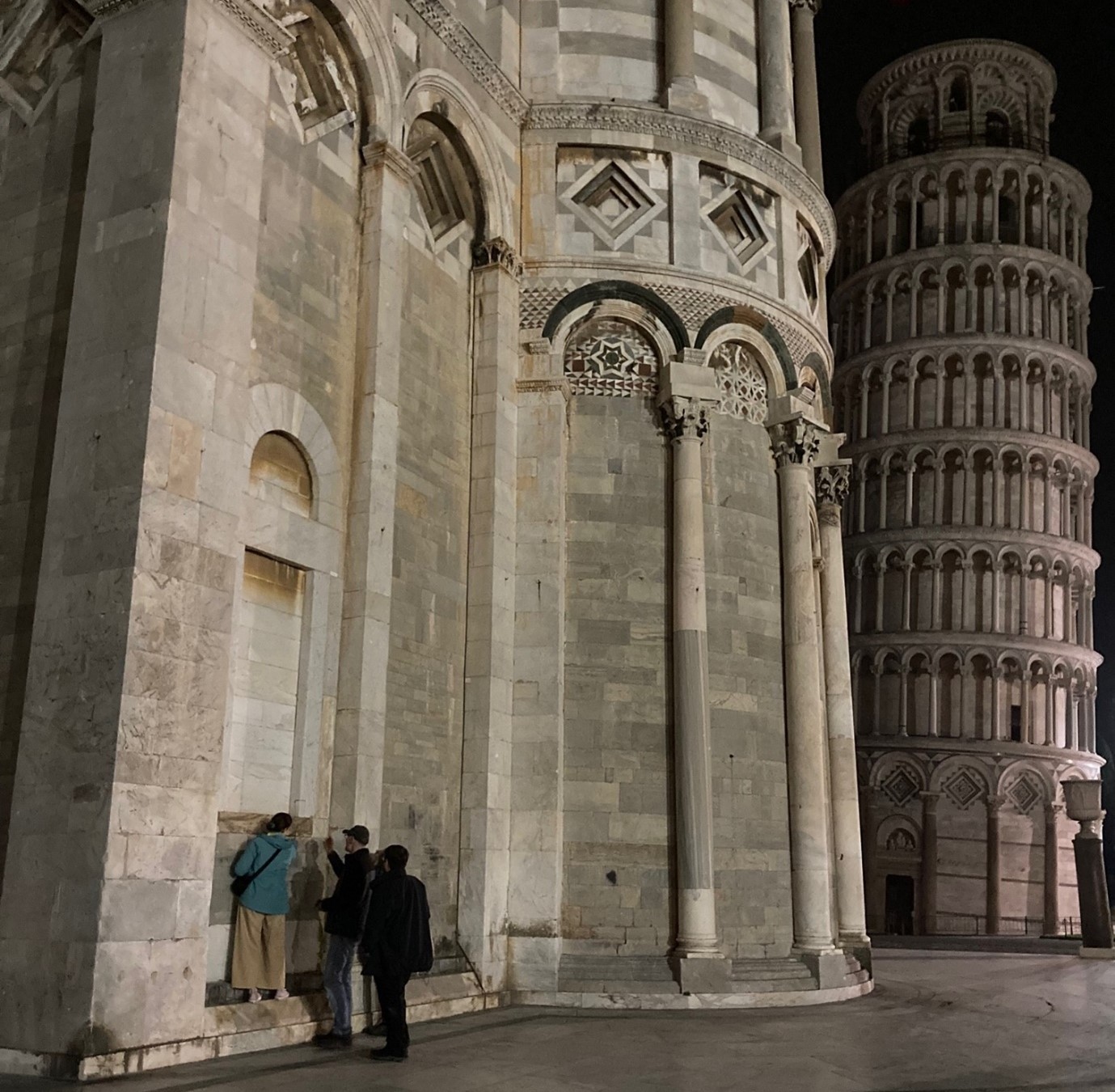
BGS colleagues admiring the building stones in Piazza del Duomo, Pisa.
Ciao!
Representatives
-
- Alicja Lacinska (project leader)
-
- Christopher Rochelle (project leader)
-
- Eimear Deady
-
- Jeremy Rushton
-
- Isaac Watkins
-
- Andrea Dini
-
- Andrea Orlando
-
- Guia Morelli
-
- Giovanni Ruggieri
-
- Andrea Brogi
-
- Domenico Liotte
- Geoffrey Giudetti
- Giorgio Simoni
Further reading
Batini, F, Brogi, A, Lazzarotto, A, Liotta, D, and Pandeli, E. 2003. Geological features of Larderello-Travale and Mt. Amiata geothermal areas (southern Tuscany, Italy). Episodes, Vol. 26(3), 239–244. DOI: https://doi.org/10.18814/epiiugs/2003/v26i3/015
Bertini, G, Casini, M, Gianelli, G, and Pandeli, E. 2006. Geological structure of a long-living geothermal system, Larderello, Italy. Terra Nova, Vol. 18, 163–169. DOI: https://doi.org/10.1111/j.1365-3121.2006.00676.x
Liotta, D, Brogi, A, Ruggieri, G, and Zucchi, M. 2021. Fossil vs. active geothermal systems: a field and laboratory method to disclose the relationships between geothermal fluid flow and geological structures at depth. Energies, Vol. 14(4). DOI: https://doi.org/10.3390/en14040933
Rielli, A, Boschi, C, and Dini, A. 2022. Tectonically driven carbonation of serpentinite by mantle CO2: genesis of the Castiglioncello magnesite deposit in the Ligurian ophiolite of central Tuscany (Italy). Ore Geology Reviews, Vol. 149, 105022. DOI: https://doi.org/10.1016/j.oregeorev.2022.105022
Serra, D, Cei, M, and Lupi, M. 2021. Geothermal Energy Use, Country Update for Italy (2015 to 2019). Proceedings of the World Geothermal Congress, May 2021, Reykjavik, Iceland.
Zucchi, M, Brogi, A, Liotta, D, Caggianelli, A, Dini, A, Ventruti, G, and Matera, P F. 2022. Fractures, fluid flow and inherited structures in geothermal systems: inputs from the Fe-ore deposits of eastern Elba Island (Northern Apennines, Italy). Geological Magazine, Vol. 159(11–12), 2238–2261. DOI: https://doi.org/10.1017/S0016756822000310
Relative topics
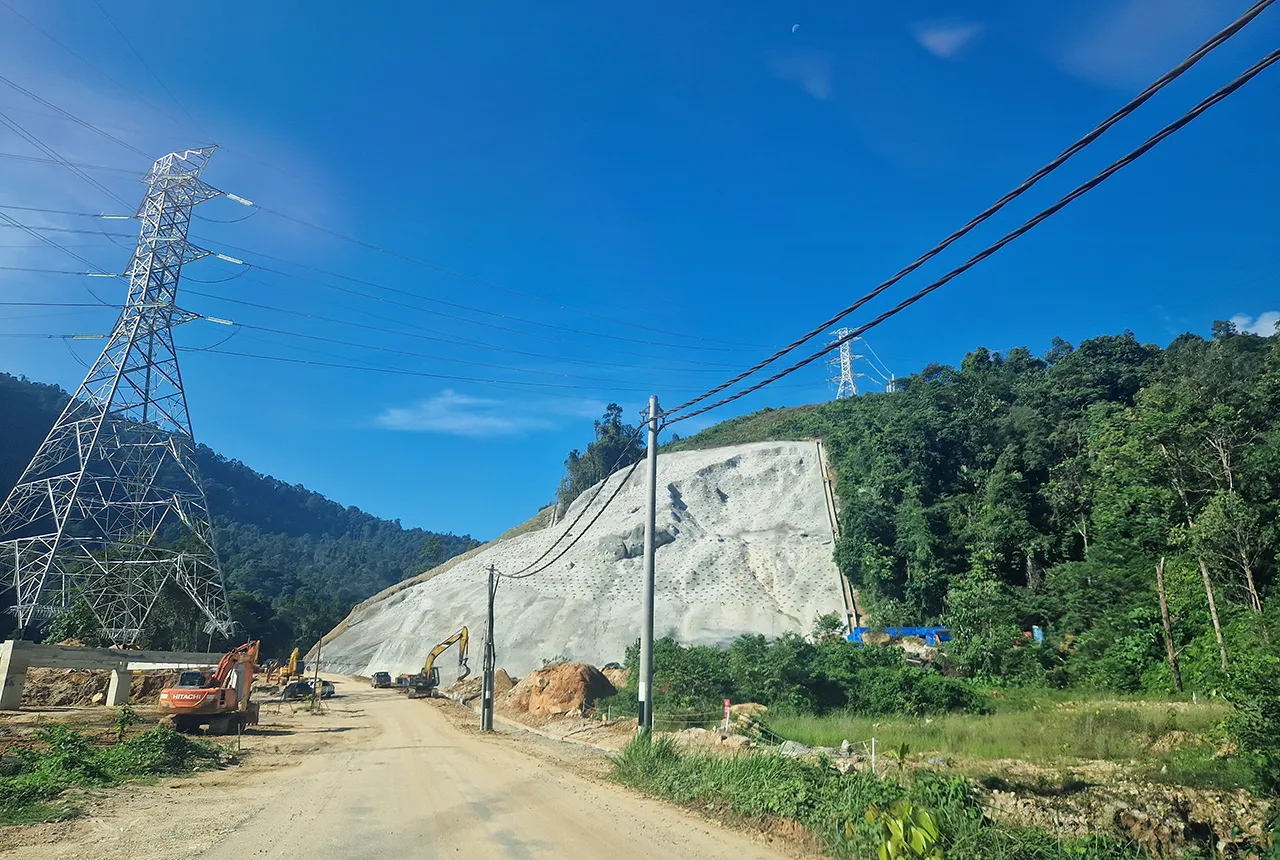
BGS awarded funding to support Malaysia’s climate resilience plan
17/12/2025
The project, funded by the Foreign, Commonwealth & Development Office, will focus on minimising economic and social impacts from rainfall-induced landslides.
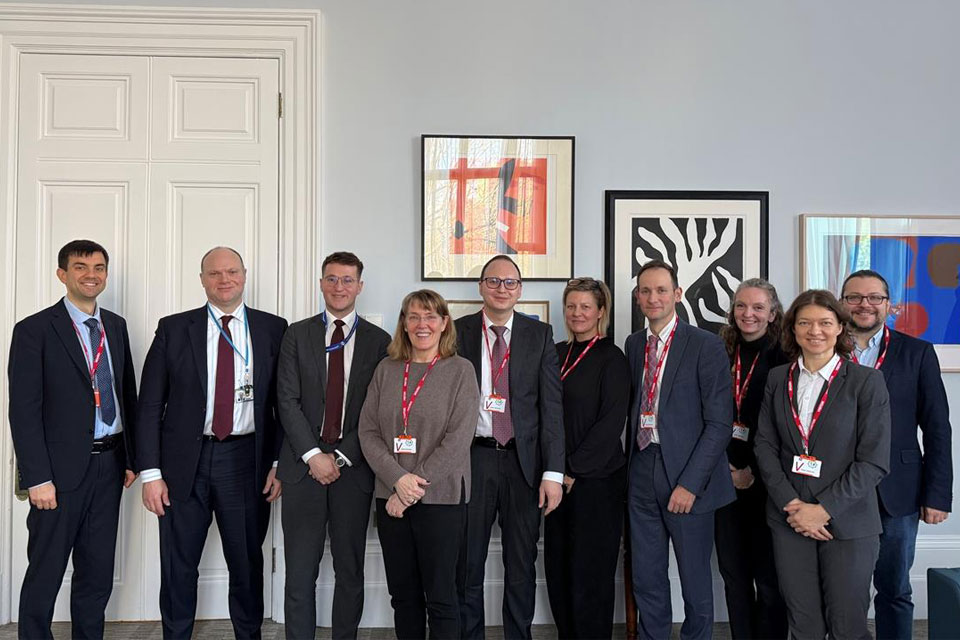
BGS agrees to establish collaboration framework with Ukrainian government
11/12/2025
The partnership will focus on joint research and data exchange opportunities with Ukrainian colleagues.
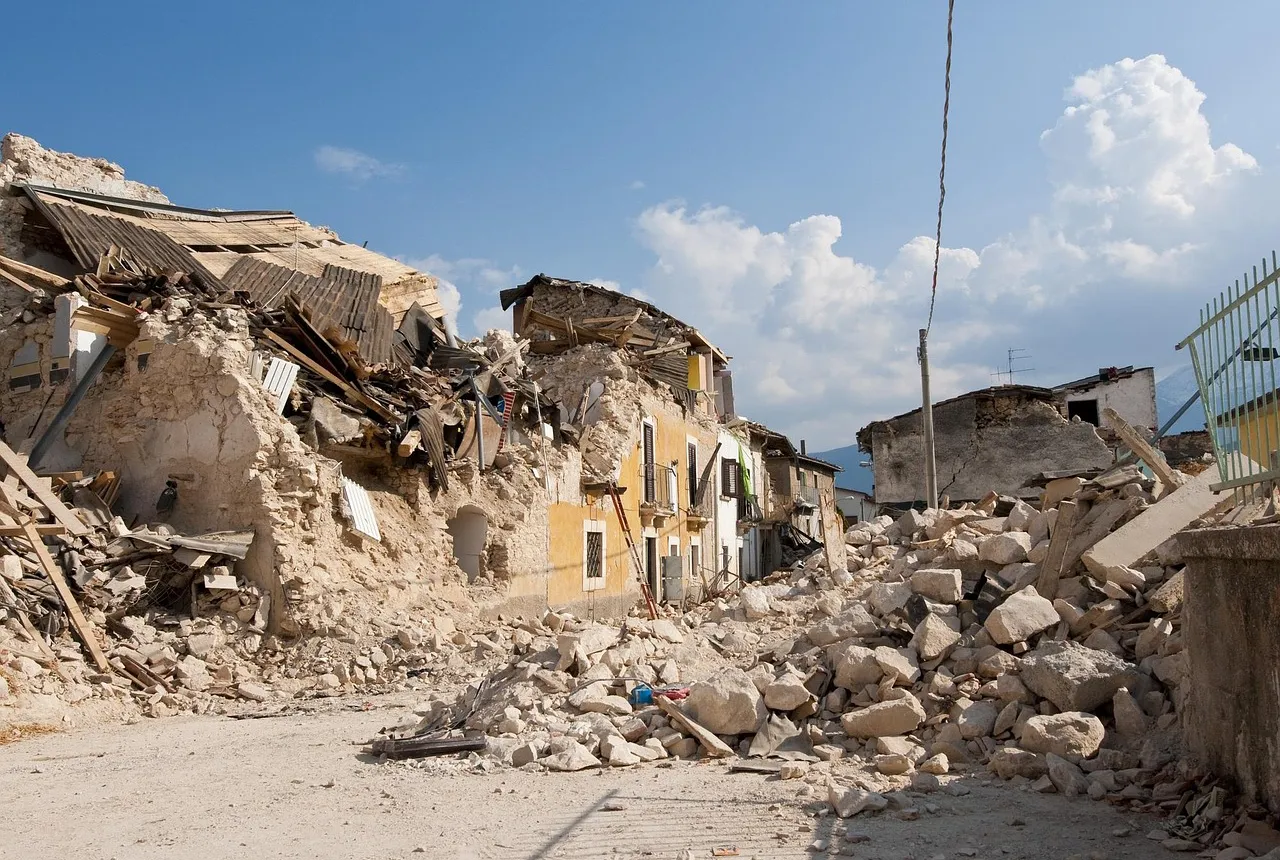
New research shows artificial intelligence earthquake tools forecast aftershock risk in seconds
25/11/2025
Researchers from BGS and the universities of Edinburgh and Padua created the forecasting tools, which were trained on real earthquakes around the world.
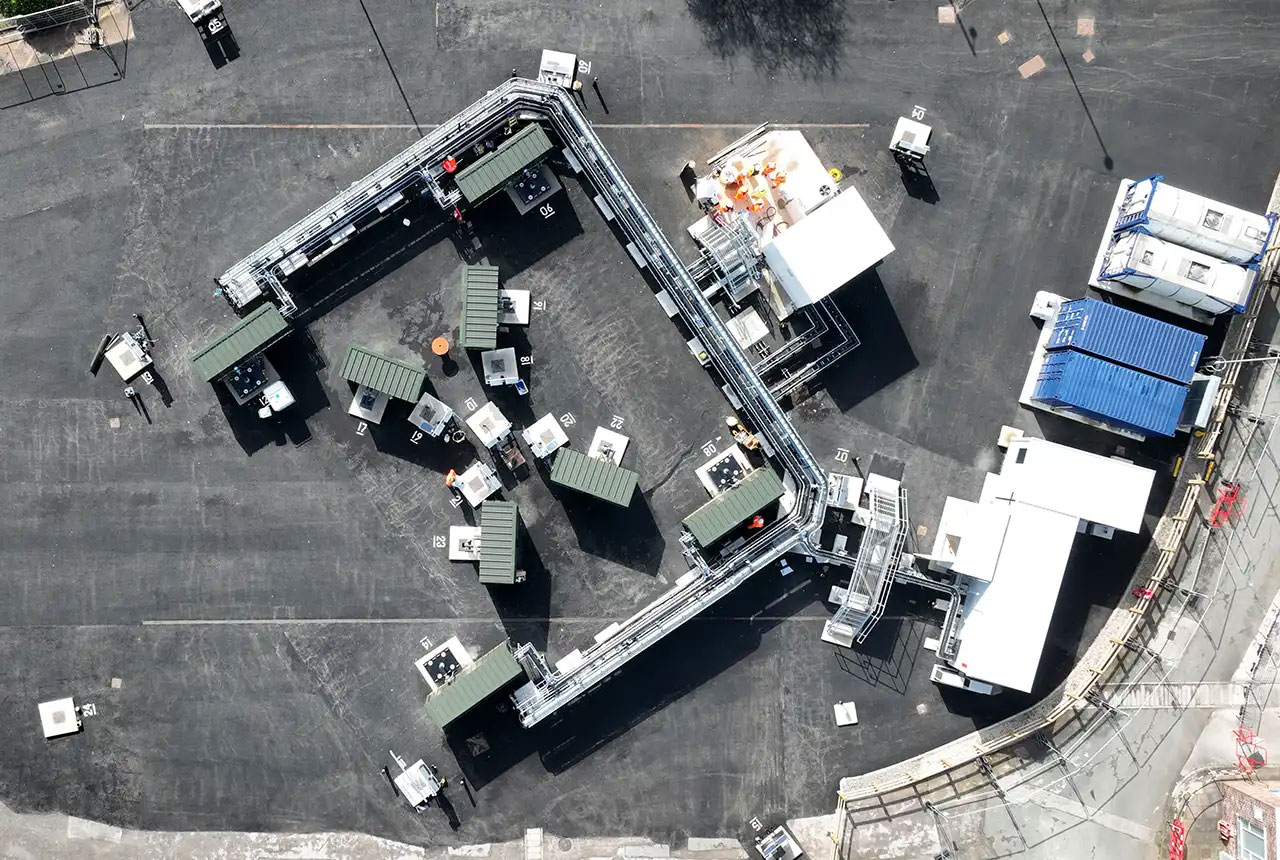
First distributed acoustic sensing survey completed at UK Geoenergy Observatory
12/11/2025
New research at the Cheshire Observatory has shown the potential for mapping thermal changes in the subsurface using sound waves.
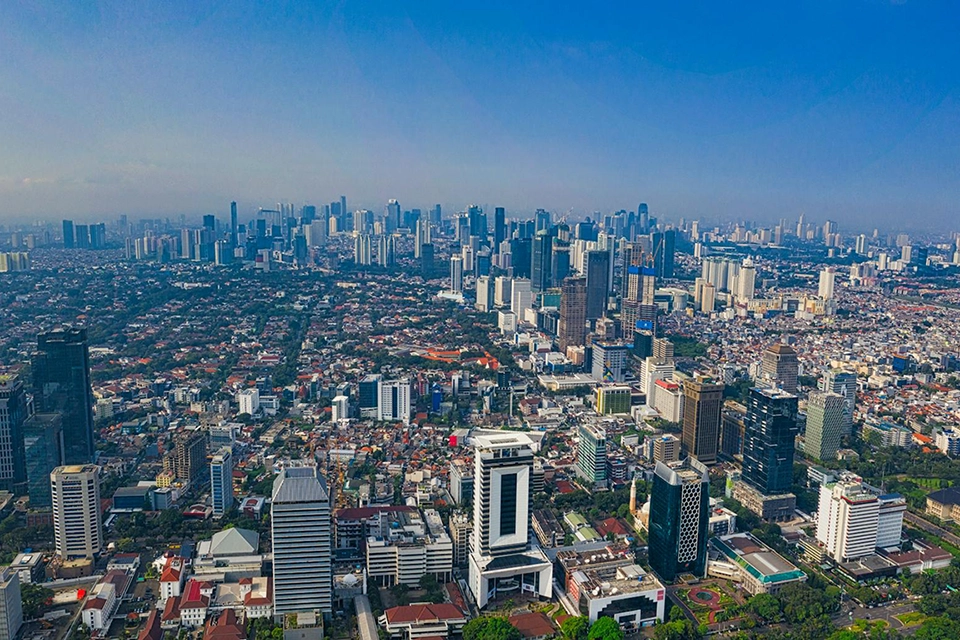
New research highlights significant earthquake potential in Indonesia’s capital city
04/11/2025
Research reveals that a fault cutting through the subsurface of Jakarta could generate a damaging earthquake of high magnitude.

World Cities Day: the geological story of our cities
31/10/2025
Understanding the rocks that underlie our towns and cities, the risks they can present and how they influence urban planning and redevelopment.
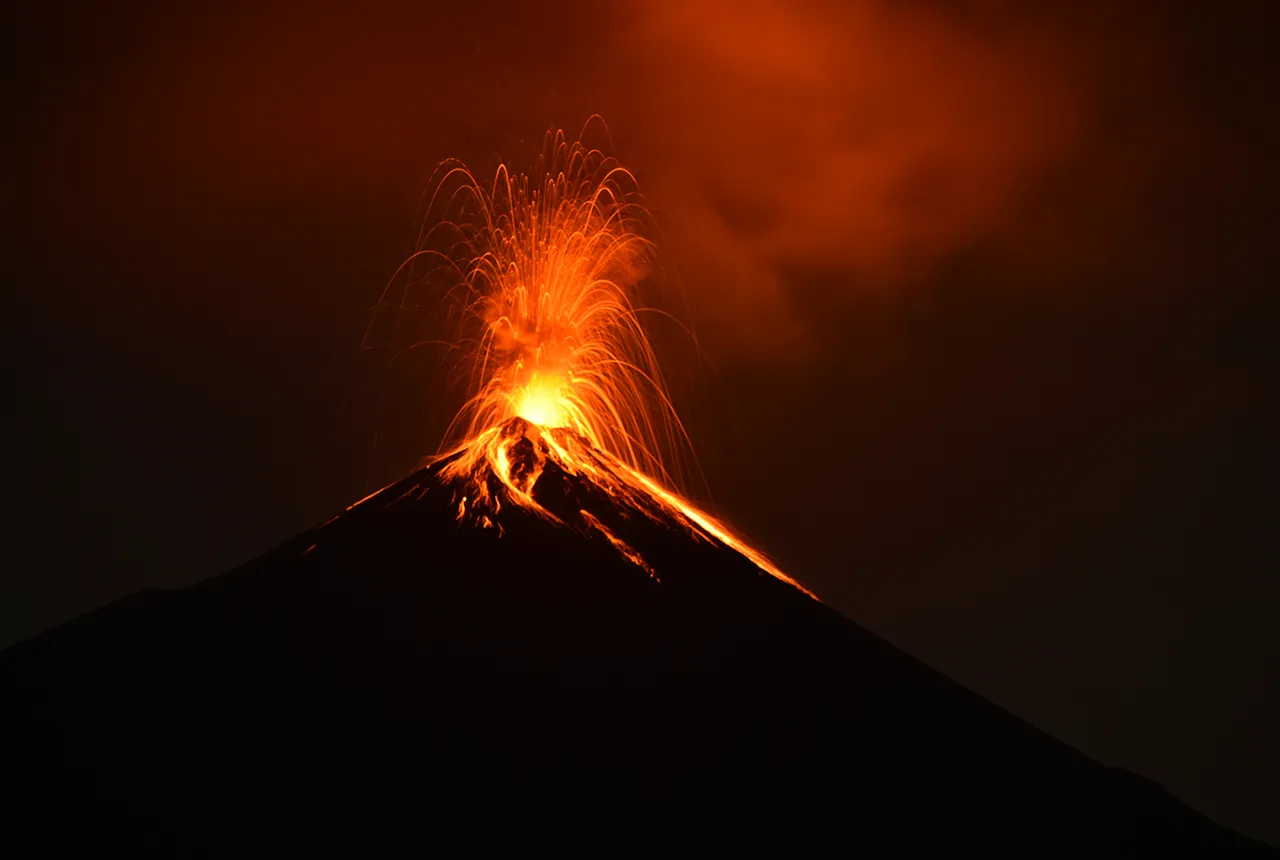
Fieldwork on Volcán de Fuego
13/10/2025
Understanding how one of the world’s most active volcanoes builds up material, and how they collapse to feed hot flows
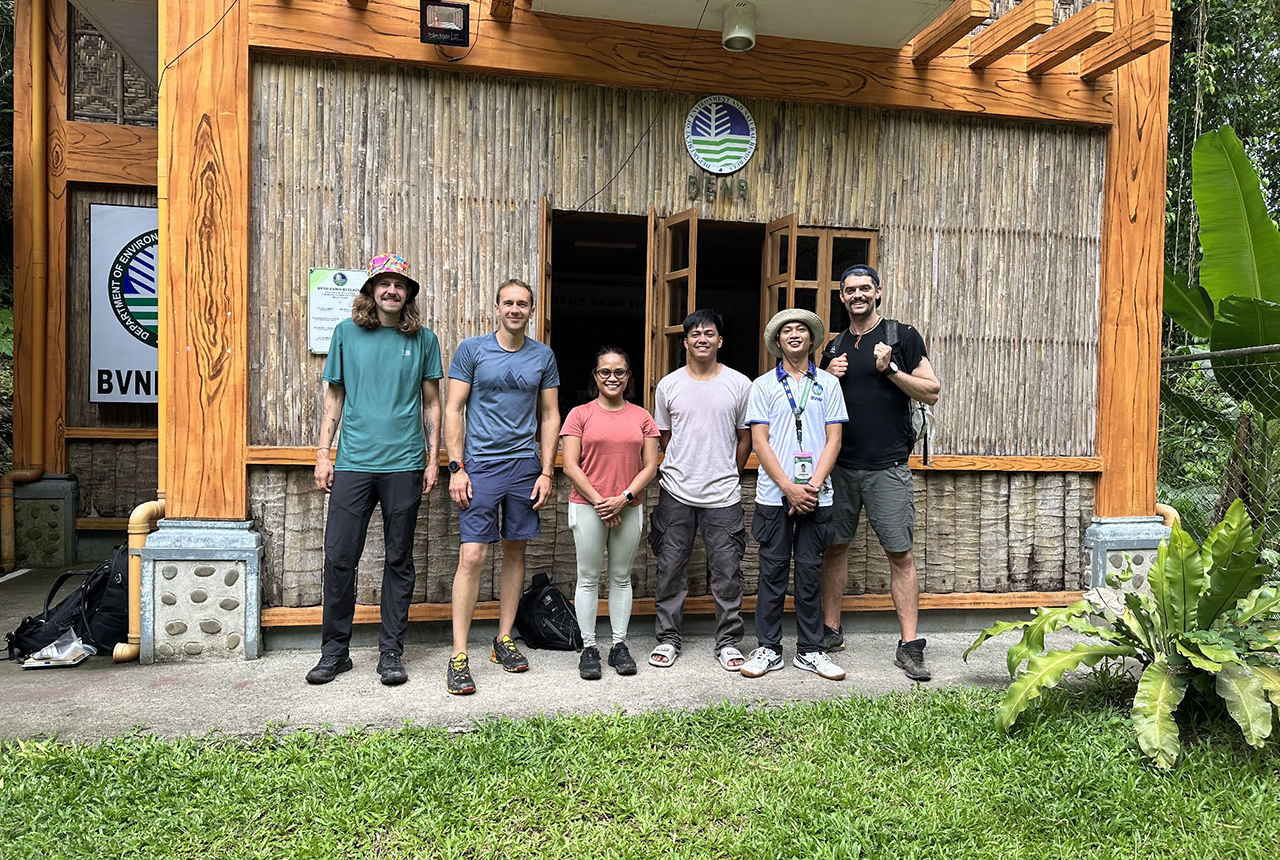
PhD adventures in the Philippines: coring around Lake Bulusan
05/09/2025
Chris Bengt recounts his two-week field trip to Bulusan Volcano Natural Park in the Philippines to collect lake sediment cores, fresh soil and water samples.
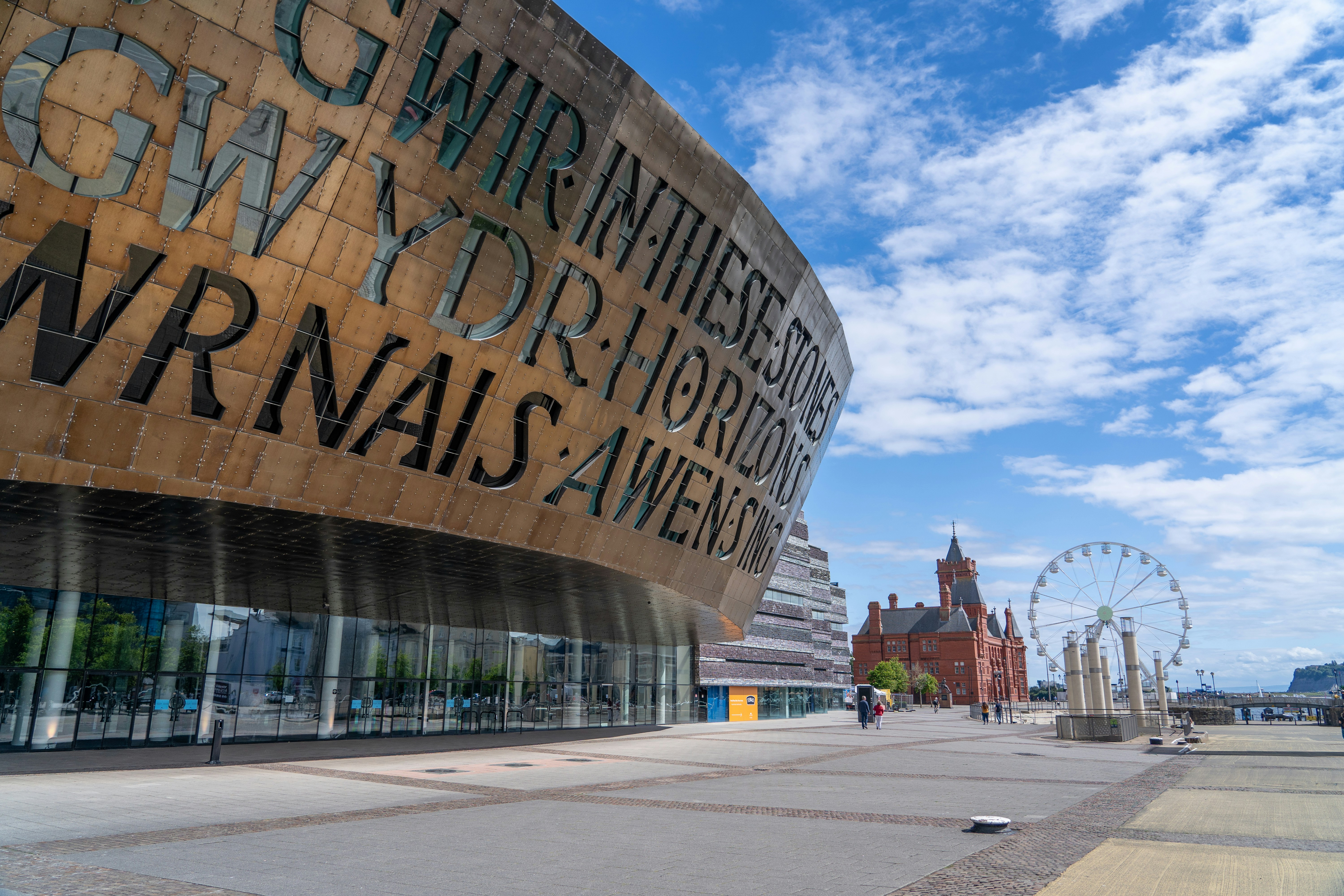
New geological ‘pathways’ discovered beneath Welsh capital
02/09/2025
Scientists have discovered cavities in the clay underneath Cardiff, which will influence the siting of future geothermal developments.
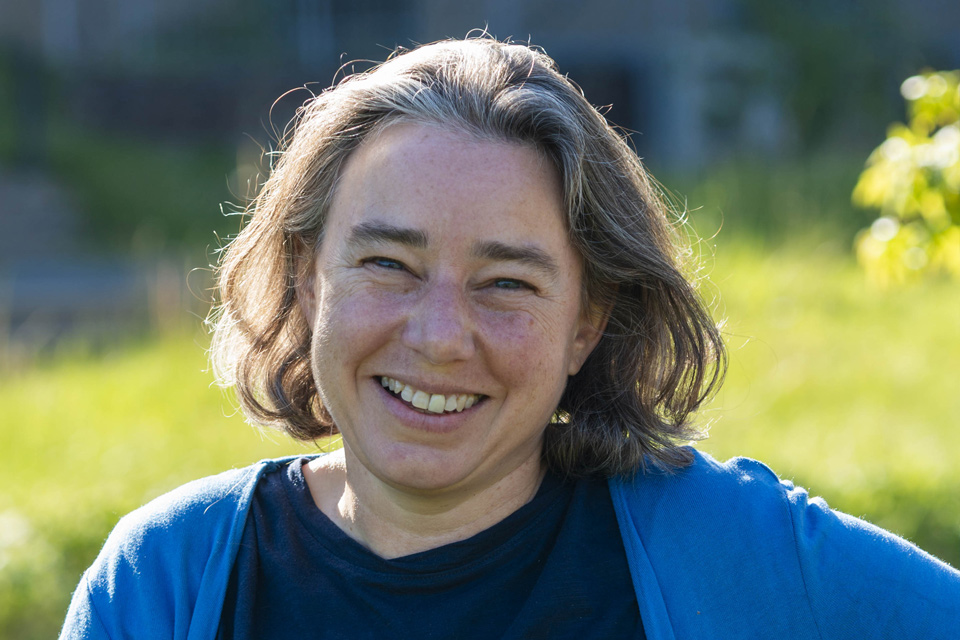
Dr Kathryn Goodenough appointed as honorary professor by the University of Aberdeen
25/08/2025
Dr Goodenough will take up the position within the School of Geosciences with a focus on critical minerals and the energy transition.
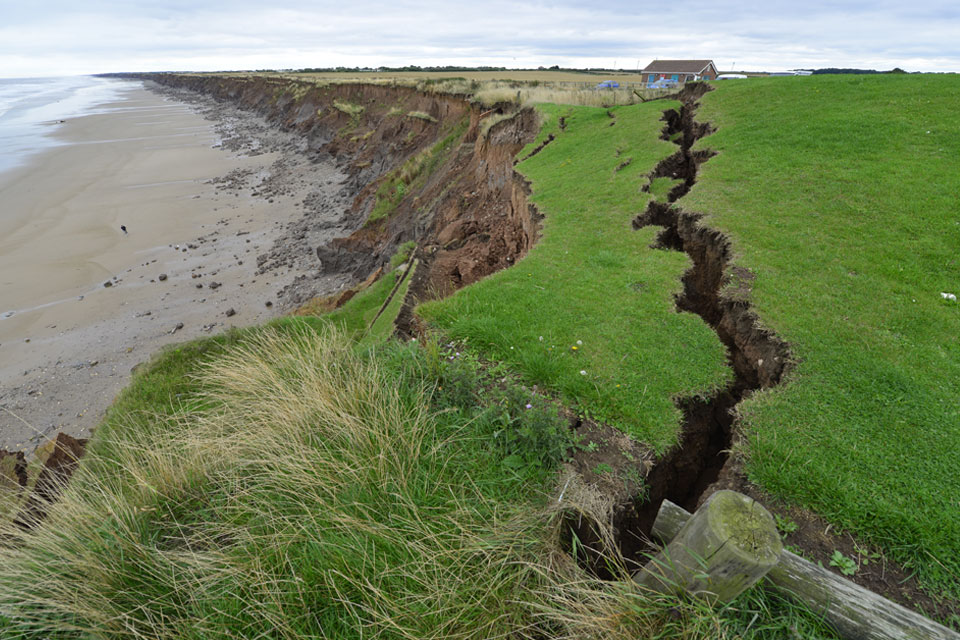
BGS scientists work with United Nations to update hazard profiles
21/08/2025
From tsunamis to sinkholes, the profiles provide a standardised, internationally agreed definition of hazards to support disaster risk management worldwide.
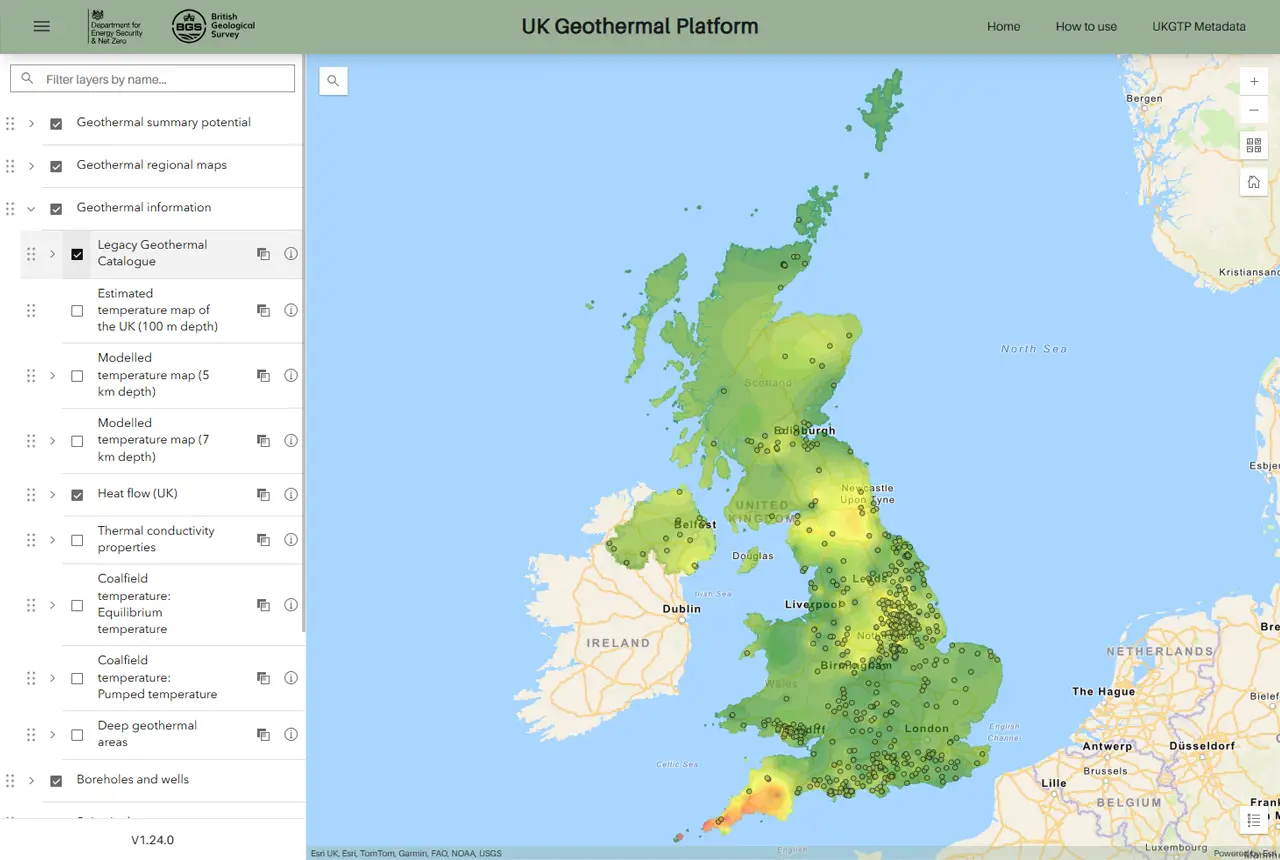
New platform highlights geothermal potential across the UK
11/08/2025
A new government-funded geothermal initiative, which includes an interactive map, has launched to help decision makers assess the geothermal potential across the UK.




